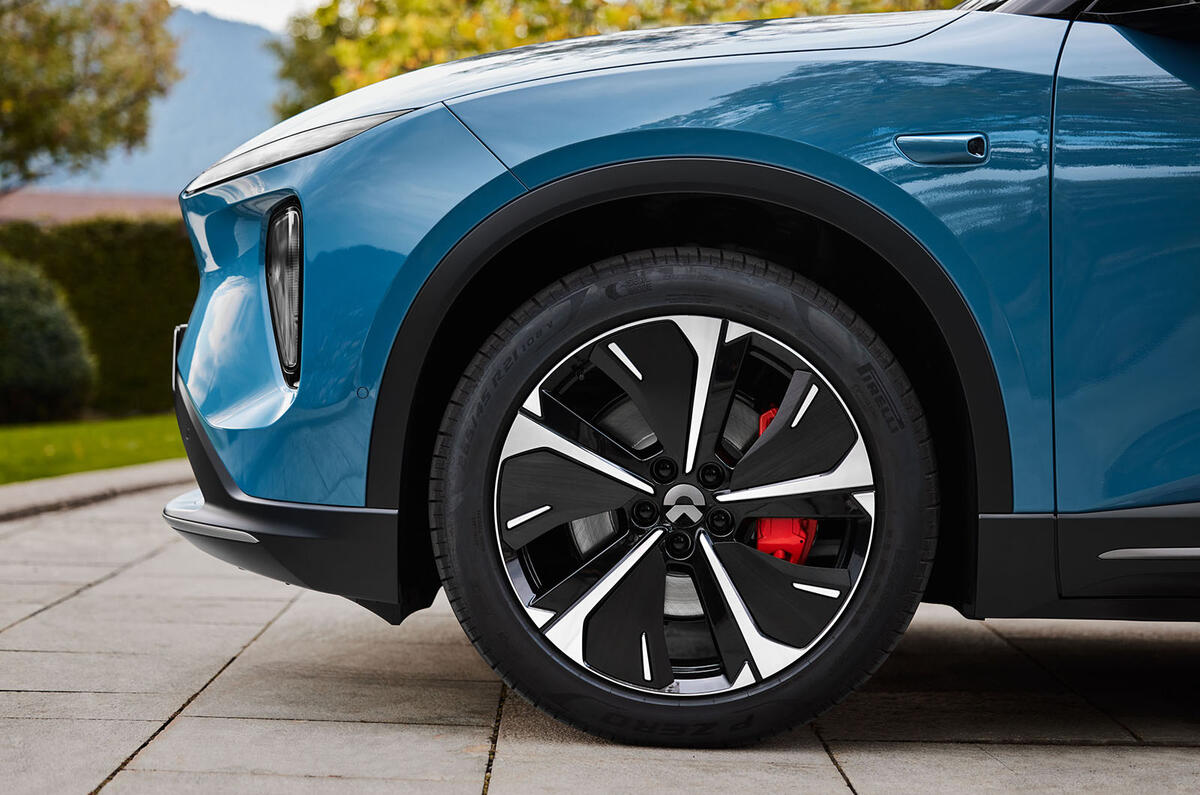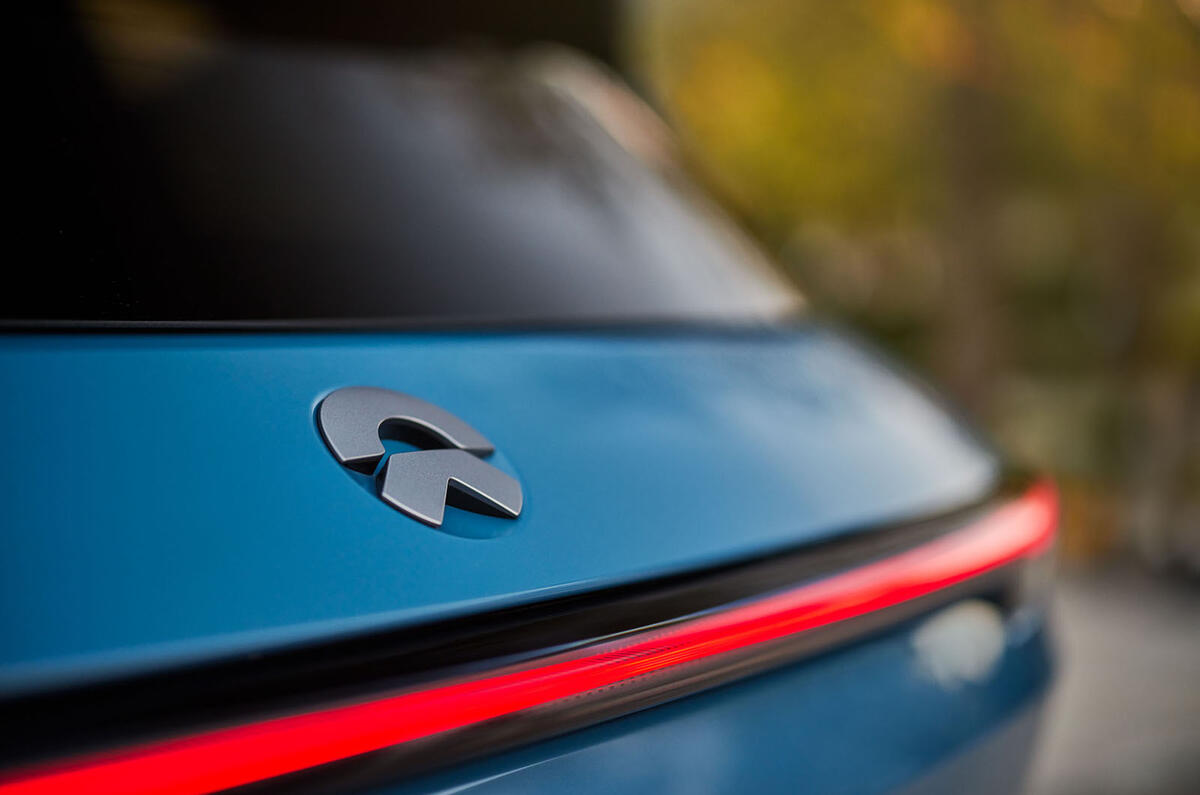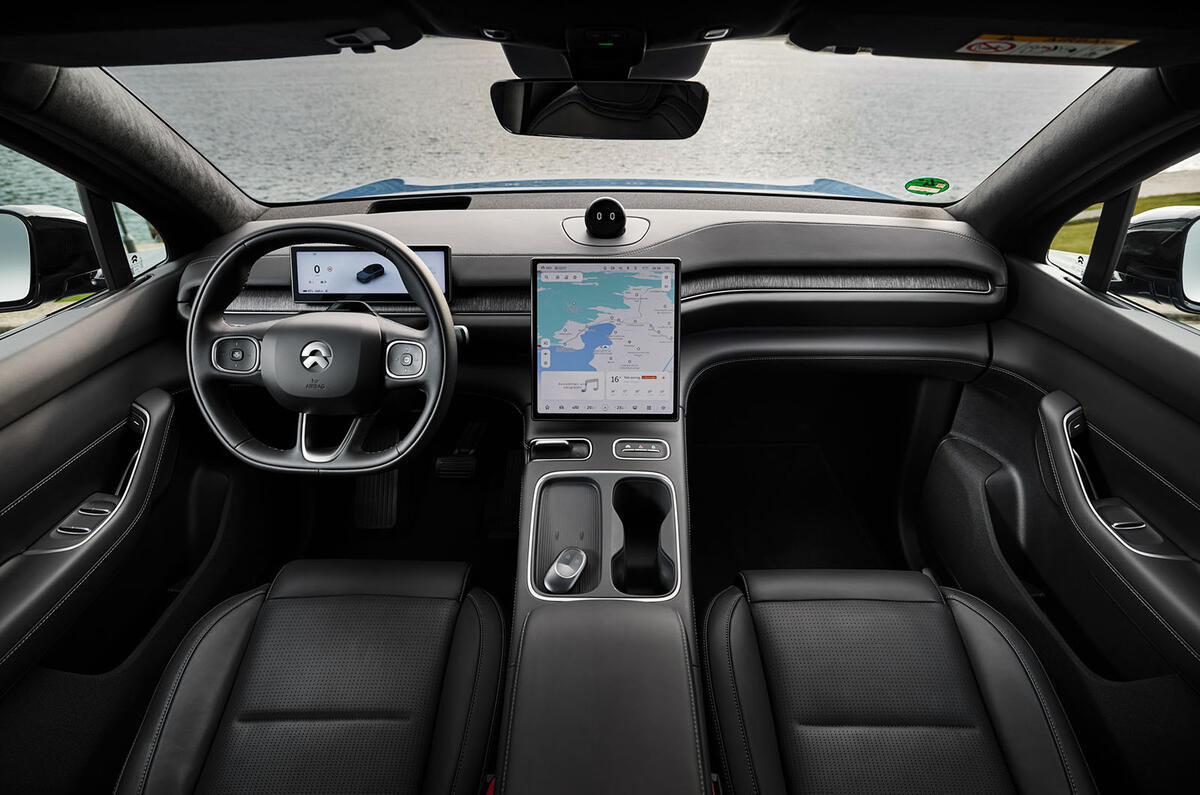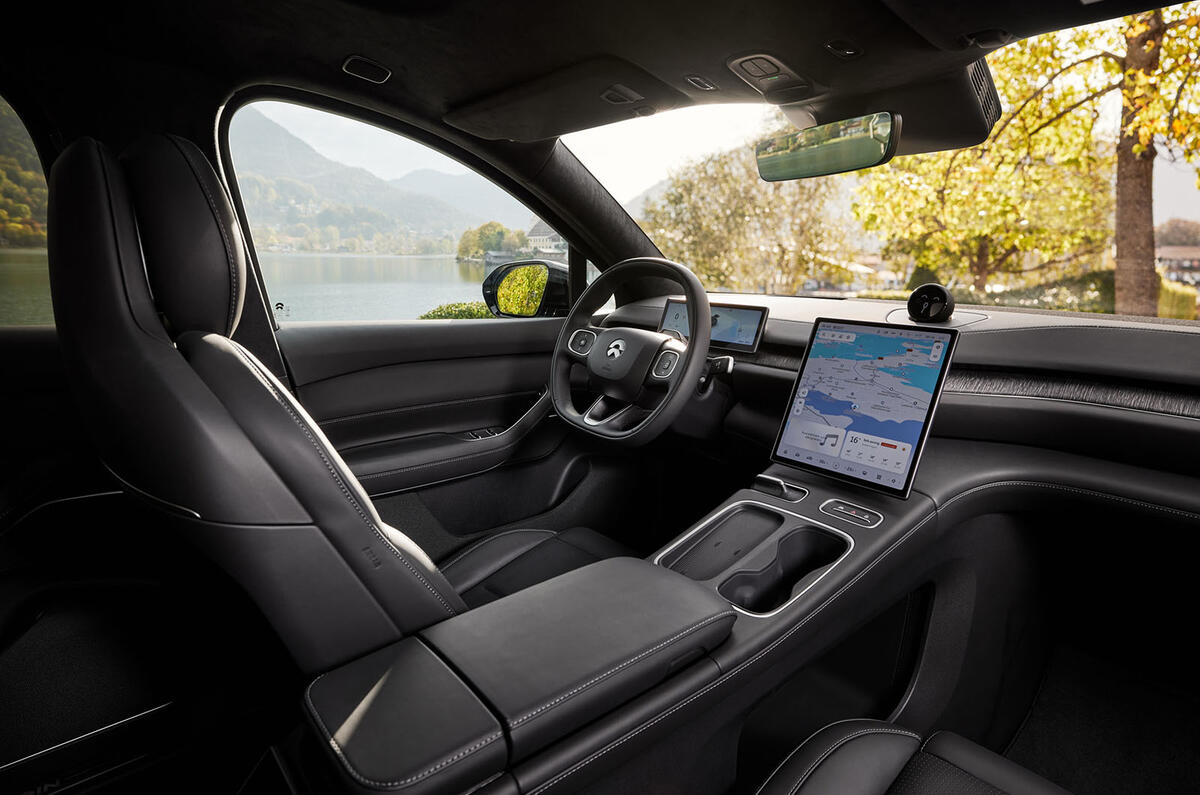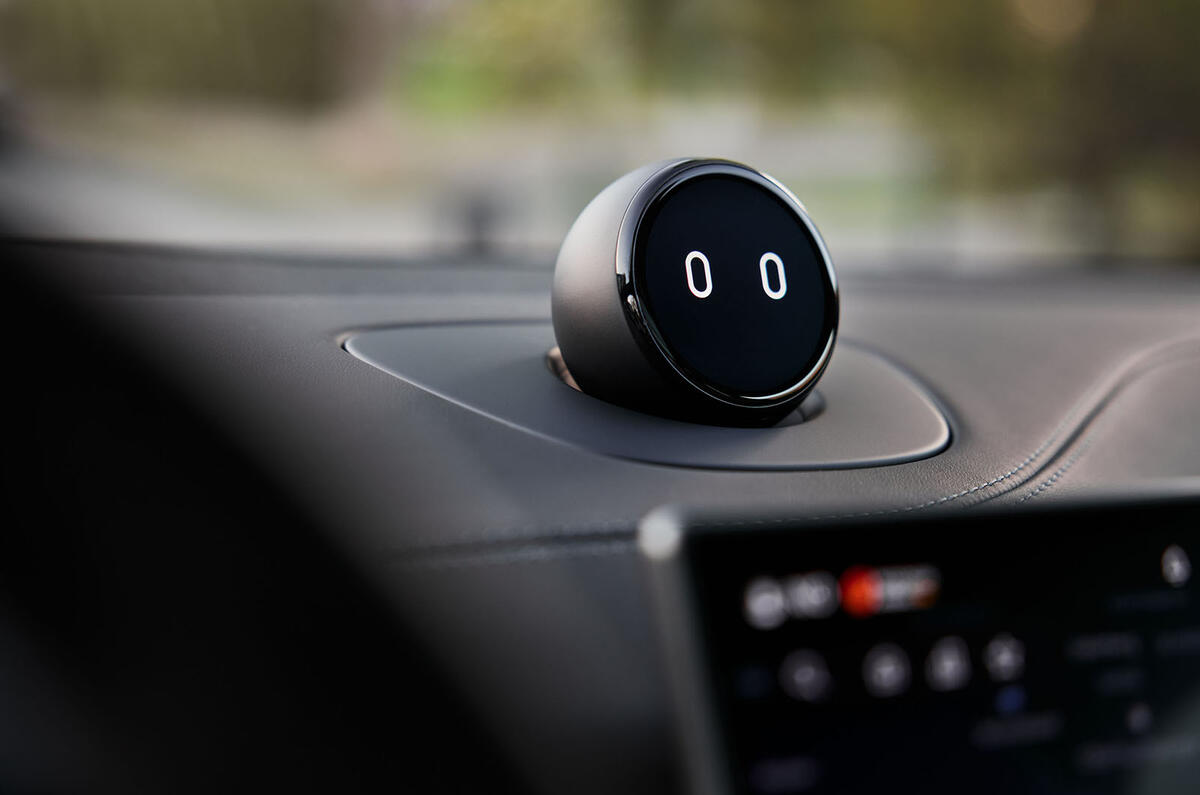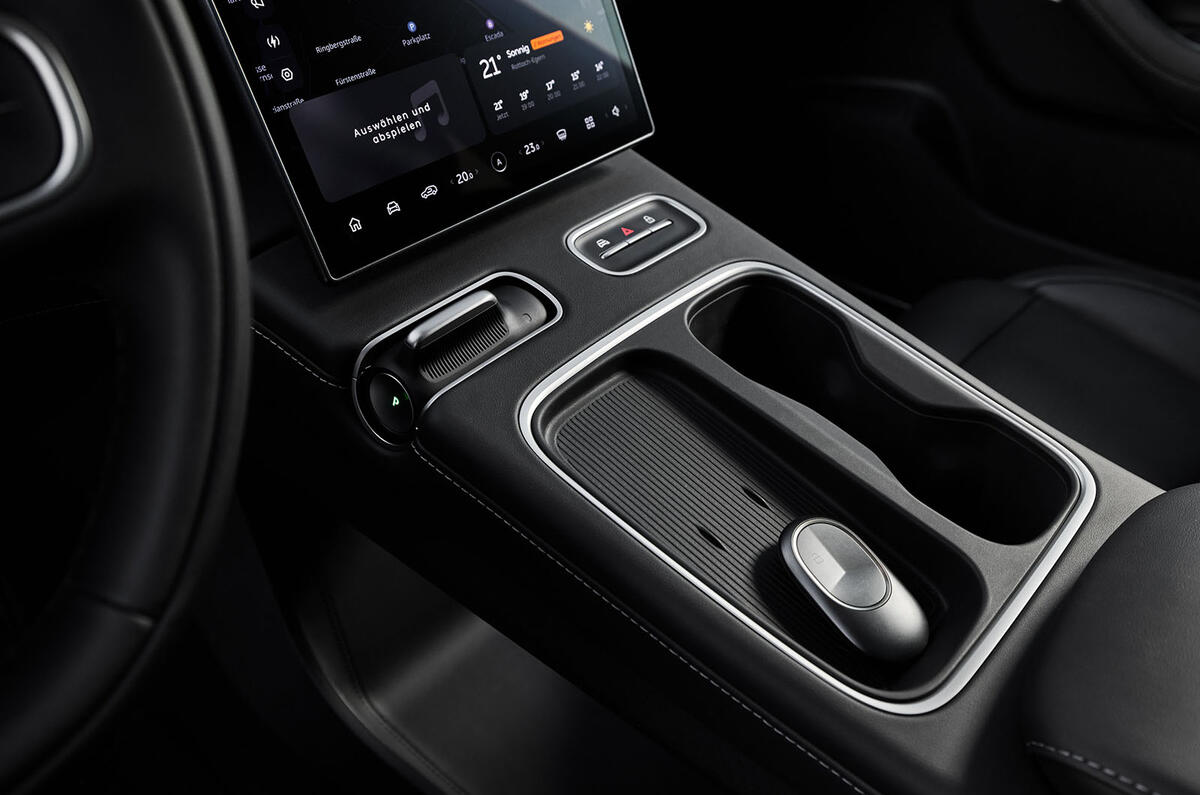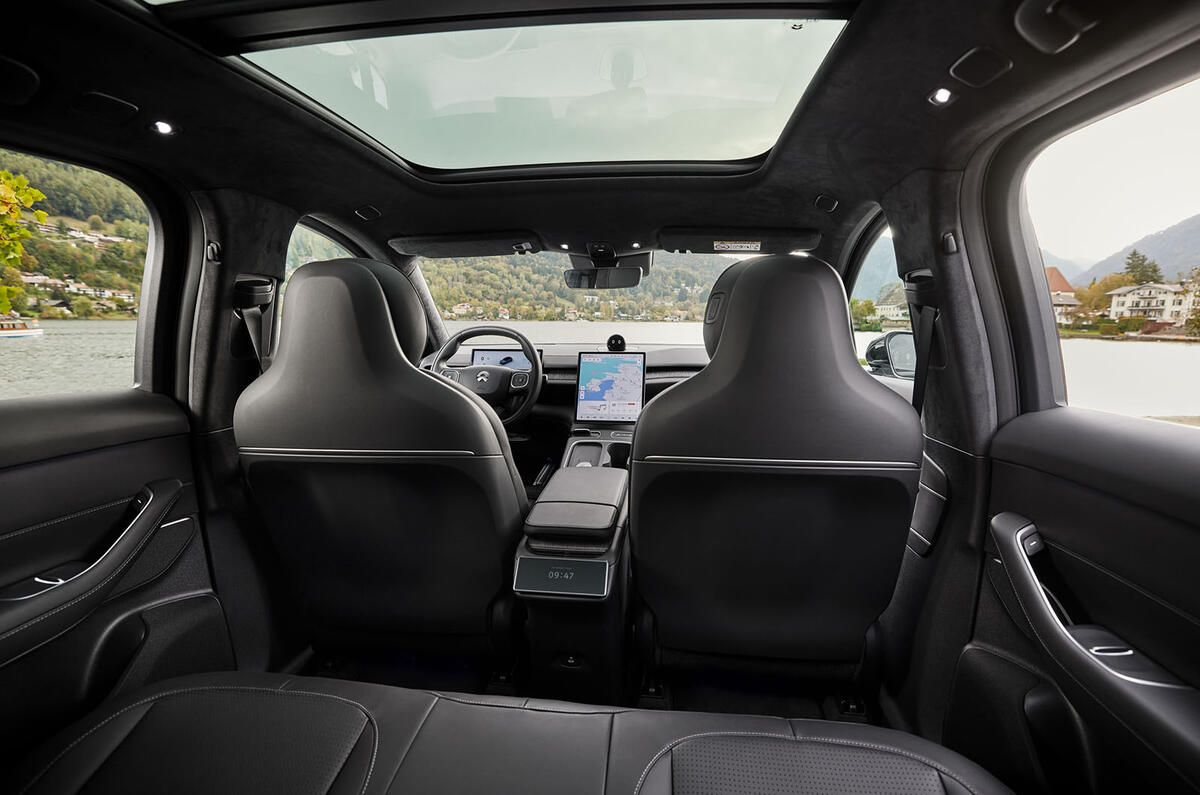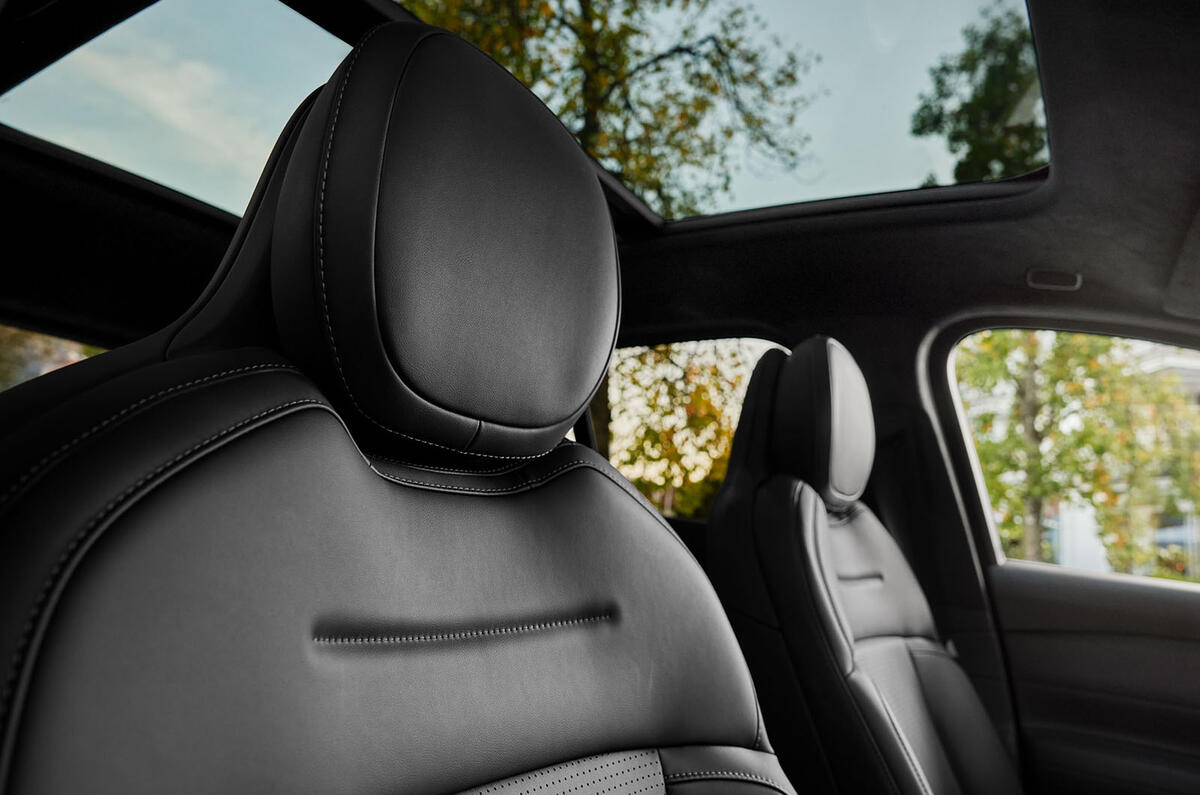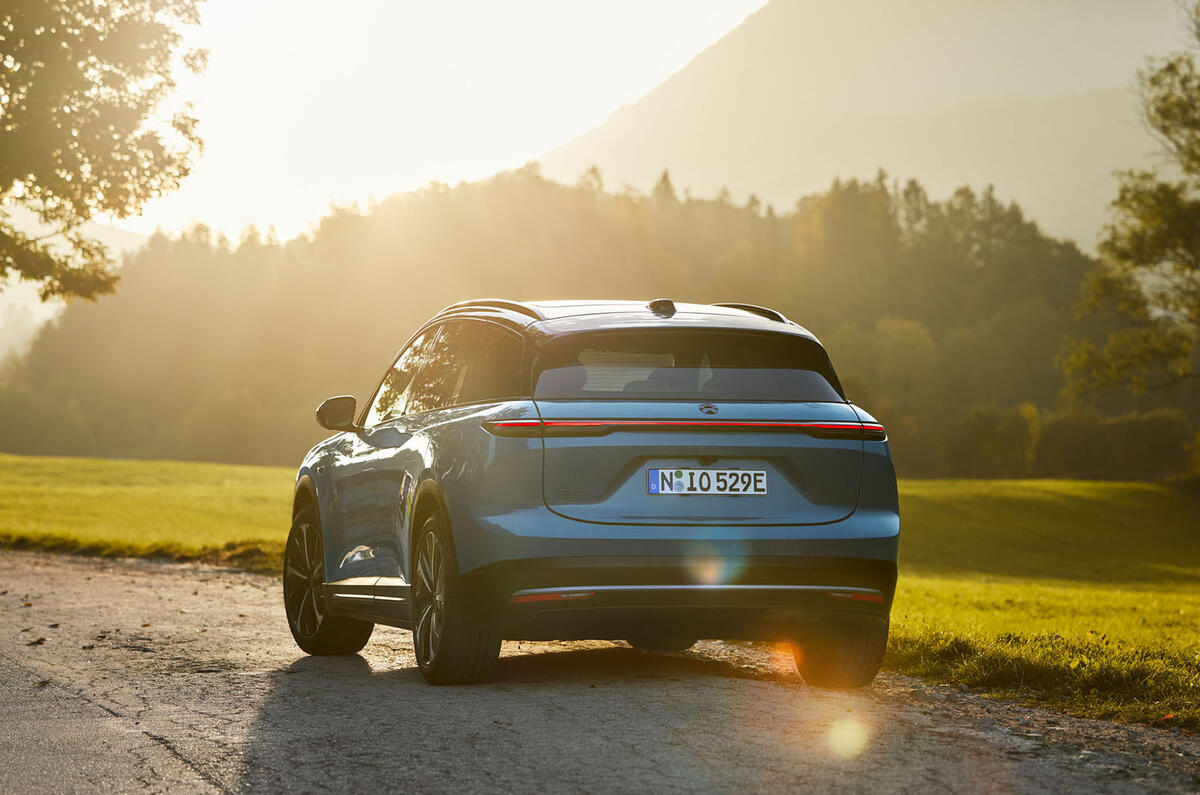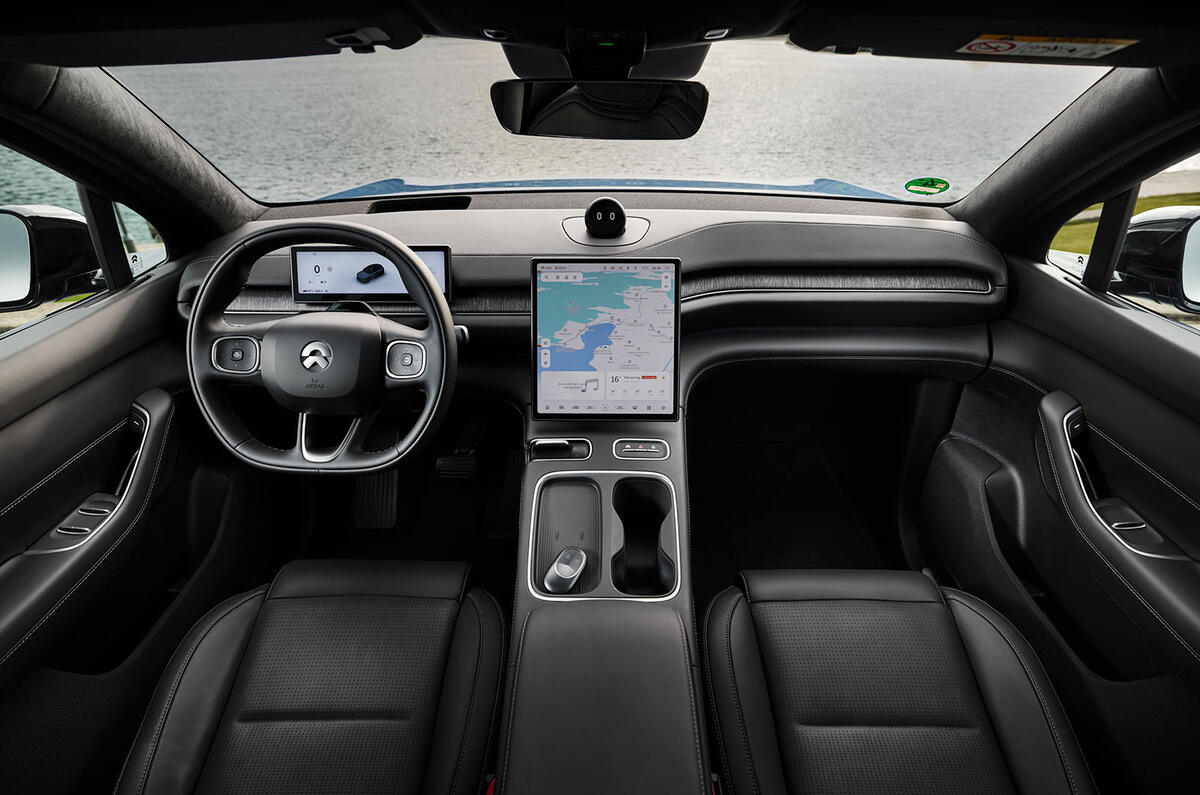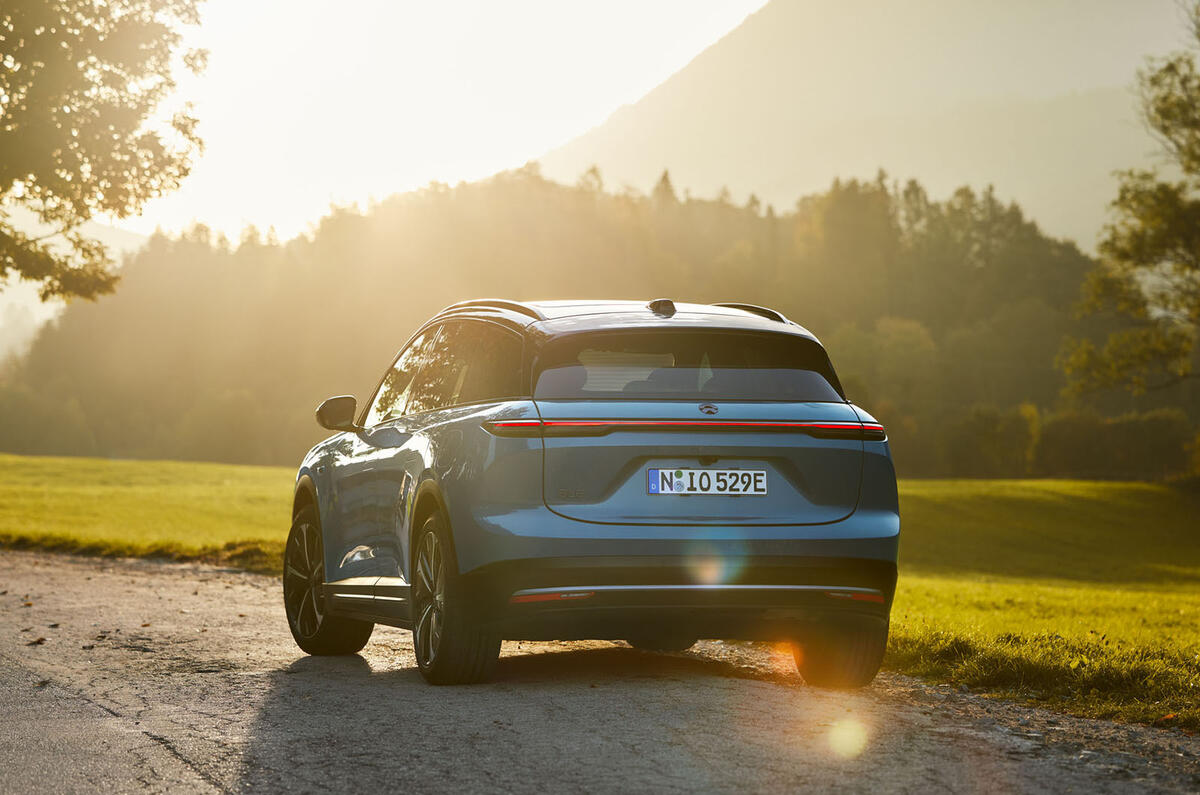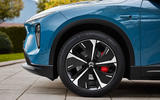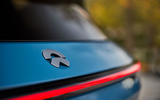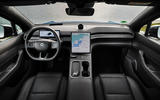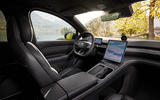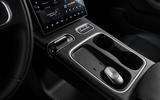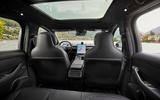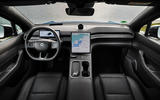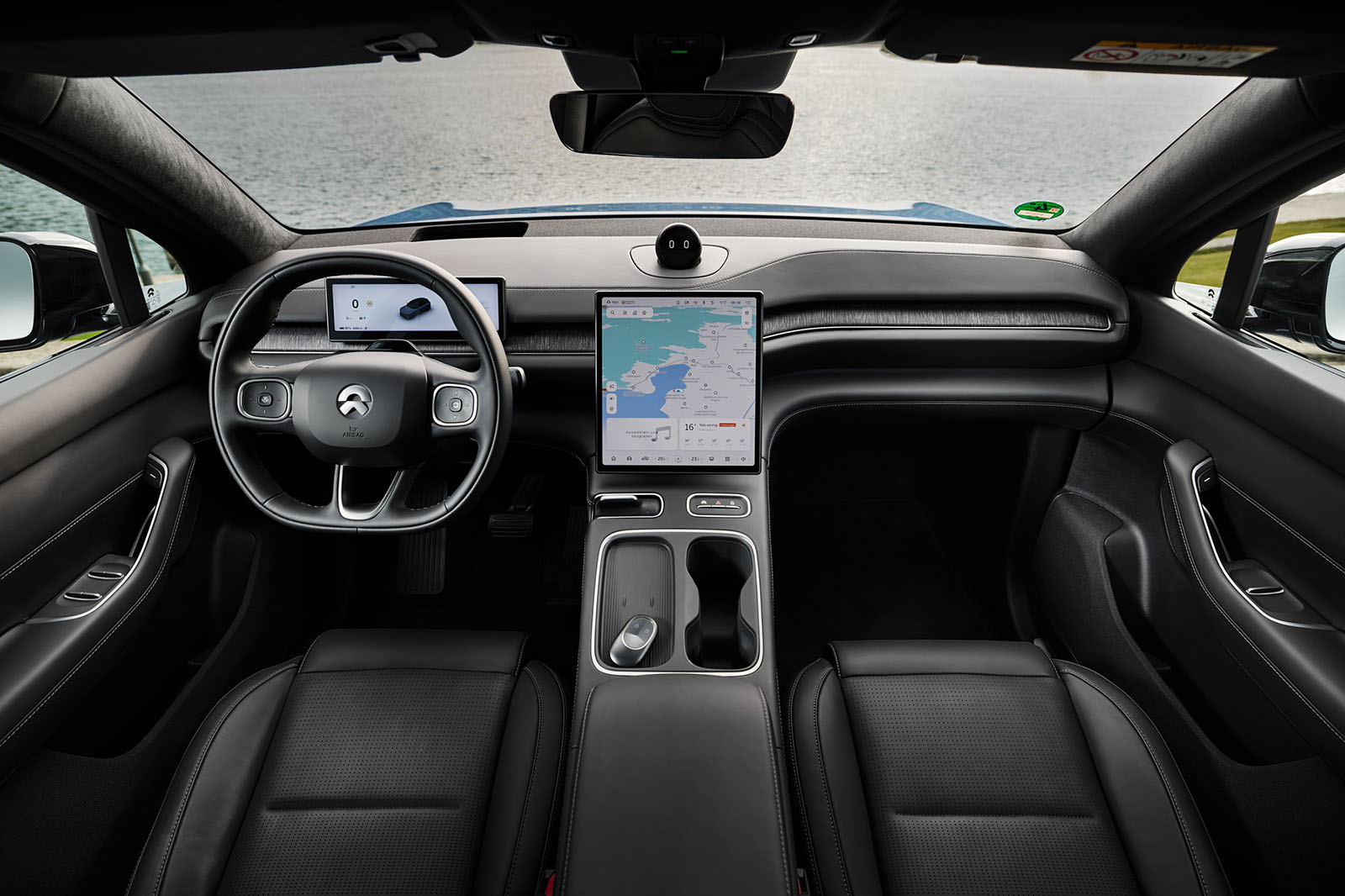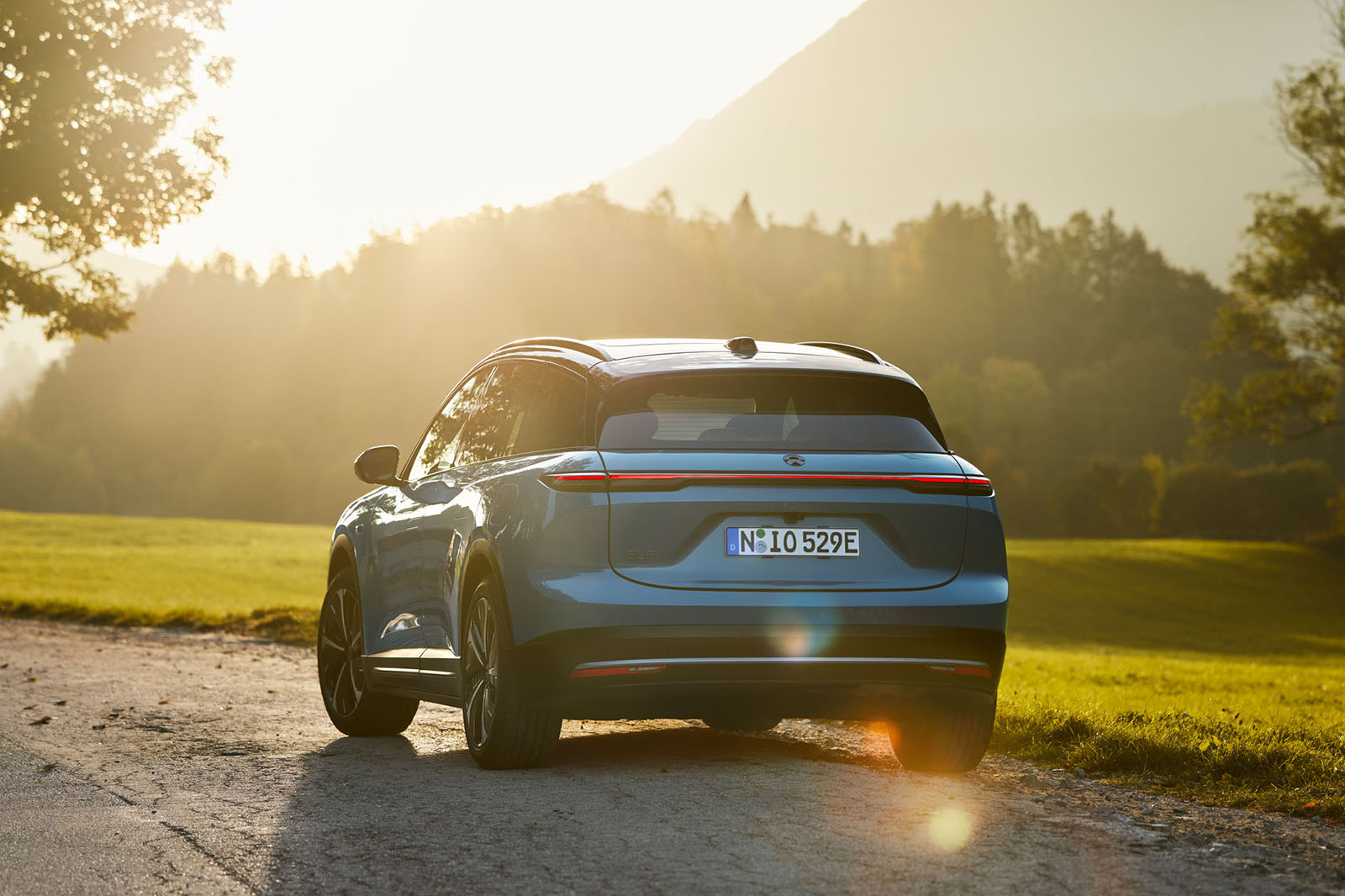This is in fact the second-generation EL6; the original one never made it out of China.
Styling wise, it’s hard not to draw comparisons between the new EL6 and the super-smooth, computer-mouse styling that Tesla has made its own, although there’s more than a hint of Hyundai at the front, too.
Sleek and inoffensive yet generic just about sums it up, although that camera housing above the windscreen is distinctive, if perhaps not in a flattering way. Taxi, anyone?
Underneath, it gets more interesting. The EL6 is based on the company’s new NT2.0 (short for Nio Technology 2.0, in case you were wondering) platform, complete with two battery options: a 75kWh or a 100kWh pack, which are good for a range of 252 or 329 miles respectively.
Charging is capped at 140kW for the smaller-battery car, 180kW for the bigger-battery model that we drove, which is a way off Tesla, Hyundai and Kia but still roughly on par with many alternative EVs.
However, Nio also has its patented battery-swap tech, which allows the EL6’s battery to be changed out for a fresh, fully charged pack in around five minutes at one of Nio’s roadside battery-swap stations. There are 120 of these planned for installation across mainland Europe, and the company intends to have several in the UK ahead of its launch – although we can’t help but feel that the UK’s notoriously awkward road infrastructure and planning laws might prove something of a challenge. Good luck to them, though.
The company has just reached the milestone of 30 million battery swaps since it launched the system in 2017, so these stations are clearly working well in China.
The EL6 gets a 201bhp induction motor up front and a 282bhp permanent magnet electric motor at the back for permanent four-wheel drive and a combined output of 483bhp.
There’s also standard Intelligent Chassis adaptive damping, which can make 500 adjustments per second, and no fewer than nine driving modes.
Notably, this latest platform also brings 33 ‘sensing units’, one long-range lidar and four Nvidia Drive Orin X chips for computing power of 1016 trillion operations per second. Yes, trillion.
If you were in any doubt that we were deep into ‘tech before automotive’ territory with EVs, you aren’t any more.


